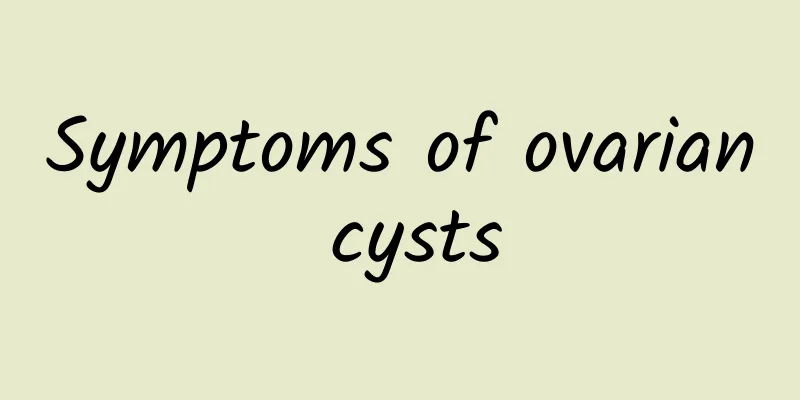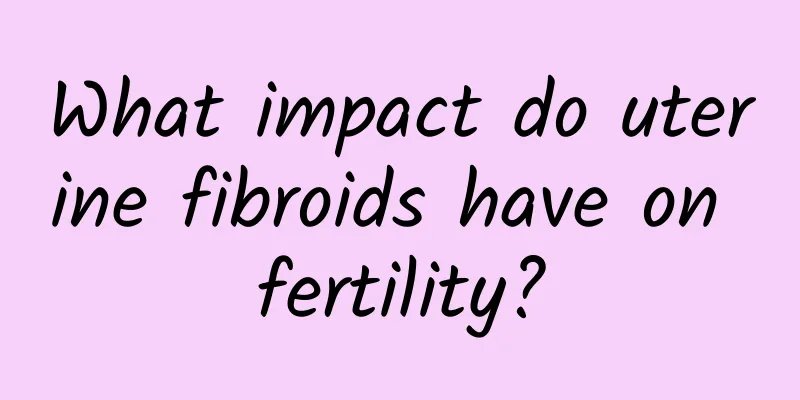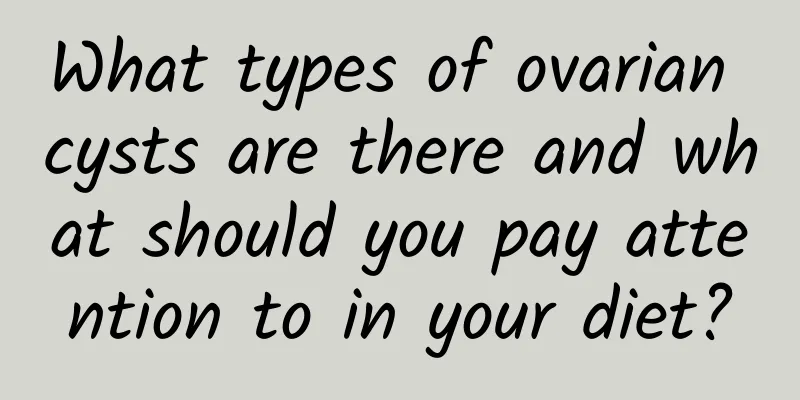Symptoms of ovarian cysts

|
Symptoms of ovarian cysts Ovarian cysts can be divided into functional cysts, hemorrhagic cysts, and mucinous cysts. Each has similar symptoms and its own characteristics. Each cyst has different treatment methods and characteristics. If you want to understand the symptoms of ovarian cysts, you can divide them according to different categories. 1. Symptoms of functional cysts Functional cyst refers to a normal egg cell, which is relatively large in shape and usually more than 5 cm is called a cyst. It will shrink and disappear with menstruation, but if functional cysts are caused by abnormal menstruation, they can be treated with medication. 2. Symptoms of hemorrhagic cysts Hemorrhagic cyst refers to the rapid growth of follicles or corpus luteum cysts in the body, involving the ovarian tissue cracking and bleeding. Generally speaking, it can disappear on its own, but it does not rule out that some patients may feel uncomfortable. In most cases, surgical treatment is not required. If you feel abdominal pain, you need special treatment. 3. Symptoms of chocolate cysts Chocolate cyst is also a common cyst, also known as endometriosis. It refers to the production of odor in the uterus, the formation of a large amount of mucus in the ovaries for a long time, which is attached to the ovaries and will gradually grow. This symptom of cysts will damage the ovarian tissue for a long time. The patient will feel very uncomfortable, or the menstrual abnormalities will be more obvious. And surgical treatment is required. 4. Teratoma cyst This type of cyst is also a special type of cyst, which refers to a problem in the cell differentiation process, and then grows in the ovary. It will not disappear on its own, but will absorb nutrients and twist the ovary when it grows. The patient will feel obvious pain, so it is best to remove it in time. After the above introduction, we have learned about the symptoms of different types of ovarian cysts. Generally speaking, early ovarian cysts can be detected through B-ultrasound and physical examination. Whether it is benign or malignant, early treatment is good for the body. |
>>: Dietary considerations for patients with fungal vaginitis
Recommend
Conventional medications for hyperprolactinemia
Hyperprolactinemia (HPRL) is a common reproductiv...
How does the hospital treat endometrial tuberculosis?
How does the hospital treat endometrial tuberculo...
Keeping warm is also a way to relieve menstrual cramps
Do you know what methods are there to relieve dys...
What are the common diseases of women of childbearing age? Will rough sex aggravate cervicitis?
Cervicitis is a common disease in women of childb...
Is fungal and trichomonal vaginitis serious?
Is fungal and Trichomonas vaginitis serious? Gene...
Don't let fat settle accounts after the New Year. These three teas can remove oil and relieve greasiness.
Are you worried about gaining weight during the C...
Experts introduce to you the causes of clinical uterine fibroids!
Uterine fibroids can occur in any part of the ute...
Can’t eat starch to lose weight? Resistant starch has these unexpected benefits! 3 groups should not overdose
Many people refuse to eat starchy foods when they...
If women often eat durian, there may be 5 benefits that come "uninvited", doctors: it is recommended to understand as soon as possible
Xiaofang has a special liking for durian, but she...
Can I take a shower after a miscarriage? How should I take care of myself after a miscarriage?
The occurrence of miscarriage is very harmful to ...
How to regulate irregular menstruation in 20 years old Common examination methods for irregular menstruation in girls
What to do if you have irregular menstruation in ...
What causes ovarian cysts?
What causes ovarian cysts? There are many factors...
Which hospital should I go to for menopause?
Menopause is a common gynecological disease in wo...
Reasons that cause irregular menstruation in women
Many women often experience irregular menstruatio...
What tests should be done for chronic cervicitis? Five tests are necessary for chronic cervicitis
1. Gynecological examination. Focus on the size, ...









